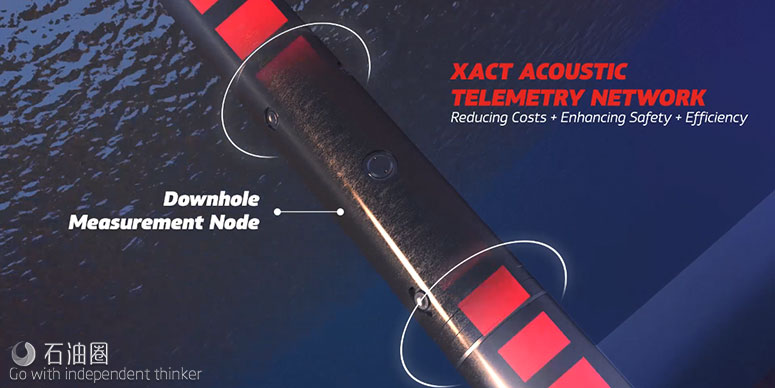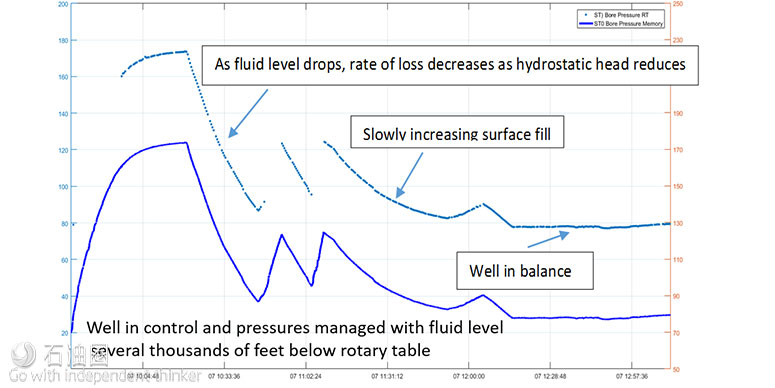Acoustics Network Delivers Sound Results
New telemetry systems are opening the path to full life-of-well pressure and fluid management.
The oil and gas industry is seeing a growing issue of how to effectively overcome the challenges presented by fluid and pressure management. This concern is only expected to grow as wells and fields become more complex.
Energy research analyst Wood Mackenzie recently suggested production from the Gulf of Mexico (GoM) could climb to a record 1.9 MMboe in 2018, a 13% increase since the 2017 peak. However, exploration is expected to remain flat, in line with global trends.
The cutback in exploration budgets throughout the last few years means operators will increasingly seek to further develop existing infrastructure, leading to an increased focus on the challenges of fluid and pressure management.
Globally, there are many existing wells that are either heavily depleted or create the challenge of needing to drill through a depleted reservoir to reach a deeper target. Such situations can create a significant pressure overbalance in the well, resulting in a potential loss of fluid, hydrostatic head and barriers and, in some cases, not being able to drill and complete desirable reservoir targets. Current methodologies for fluid and pressure management might impact fluid injection capabilities and could ultimately affect reservoir productivity.
The ability to measure fluid levels downhole to maintain safe barriers and to manage pressures to better control mud weight windows while drilling ahead, cementing, running casing and completing wells is highly important. Receiving downhole data from a telemetry system in real time irrespective of fluid, flow or the formation characteristics can enhance the accuracy of decision-making, thereby increasing operational efficiency and reducing risk.
Conventional telemetry has often focused on mud pulse systems that rely on the maintenance of a full mud column. This can be achieved by enhanced fluid injection, but this process can increase overbalance in the reservoir. Such systems also deliver a relatively low data rate, are depth limited and create a constriction in the bore of the drillpipe. These systems are deployed and then can send meaningful real-time data only when on the bottom drilling ahead. For an offshore deepwater well, this might mean only receiving data for less than 15% of total well construction time.
Cementing, running casing, tripping in and out of the hole and installing completions are activities that, despite being equally challenged by pressure and fluid management, have no real-time access to actual downhole conditions.
Applied acoustics
An alternative to existing telemetry systems has been developed by XACT Downhole Telemetry. The company’s acoustic downhole distributed sensor and telemetry network transmits real-time data through the wall of any work or drillstring irrespective of flow, fluid type, formation or depth. The network’s improved real-time downhole visibility through a nonfluid dependent system enables operators to control downhole pressures and fluid levels by providing accurate pressure and temperature readings. The independence from the mud system allows, in a controlled and regulatory-approved methodology, the ability to reduce the hydrostatic head leading to minimization of fluid loss, formation and wellbore damage.
XACT’s acoustic telemetry network is based on the installation of acoustically linked downhole measurement and telemetry tools to create a robust telemetry data and sensor network.
The tools are conservatively spaced about 1,524 m to 1,829 m (5,000 ft to 6,000 ft) apart in the vertical sections of the well and 914 m to 1,219 m (3,000 ft to 4,000 ft) apart in horizontal sections of the well to provide optimum signal strength and transmission range depending on the deviation of the hole. In addition, the fullbore tools allow the deployment of wireline-conveyed tools as well as wiper darts, third-party activation balls or the passage of large amounts of lost circulation material, cement or completion proppants.
The collar-based design of the tools provides sufficient space for lithium batteries, sensors, electronic boards and the piezoelectric stack, which allows the acoustic transmission of data back to the surface. In addition, mechanical parameters such as pressure, weight, torque, bending and temperature are recorded downhole and transmitted acoustically in real time via the steel body of what has now essentially become a smart string.
The tool also can gather distributed measurements from a range of locations via the multiple spaced nodes to obtain a real-time snapshot of the conditions along the entire wellbore. Data are sent to a wireless receiver at the surface and from there are wirelessly transported to a laptop for integration with other rig data.
GoM case study
An operator of a GoM deepwater well needed to minimize fluid losses and associated formation damage while maintaining optimum overbalance at the formation. This was to be accomplished by reducing and controlling the fluid level in the high-pressure riser annulus. Conventional measurement techniques, such as echometers, were problematic in accurately measuring the riser fluid level and providing real-time updates required to proactively manage inflow. Additionally, any in-well tools had to be fullbore to allow the passage of wireline tools needed to operate a formation isolation valve.
The operator used the XACT acoustic telemetry network, a technology the operator helped develop, to more reliably and safely minimize formation damage. Integrated measurement and acoustic telemetry nodes were positioned in the riser at 1,066 m and 2,286 m (3,500 ft and 7,500 ft) below the rotary table.
Bore and annulus pressure data were acquired and displayed at the surface to determine the top of the mud column relative to the rig floor and the volume of mud above the tools. Data were transmitted every 25 seconds throughout the operation, allowing rig personnel to safely monitor the well through all operations including tripping, tubing-conveyed perforating (TCP) gun operations, acidization and installation of the upper completion.
Knowing the position of the top of the fluid in real time allowed the operator to proactively manage the losses by maintaining the fluid level at about 1,219 m below the rotary table.
This applied a known and controlled overbalance on the reservoir, which minimized loss rates and potential formation damage because of excessive overbalance and high loss rates. This can be critical in injection wells as controlling losses by pumping pills can adversely affect the performance of the injector and lead to earlier intervention.
Continuous measurement allowed timely adjustments to be made as loss rates changed before and after perforation and during the subsequent acid wash and mini frack operations.
Comparison of the distributed measurements from the two XACT tools showed a partial blockage forming between the tools, identified as hydrate buildup. Then fluid levels were modified to increase pressure on the reservoir to minimize this effect, and later were removed by glycol prior to future operations.
The operator successfully engineered and safely completed an operation that would not have been attempted without the capability to oversee continuous fluid and pressure monitoring without affecting well performance.
Looking ahead
The acoustic telemetry system has been used to assist in fluid and pressure management in a growing range of applications and global locations. The system has been deployed several times in the GoM and North Sea during drilling operations and is set to be deployed in the North Sea again for casing and cementing applications in wells with pressure and fluid management issues. The need for effective and efficient fluid and pressure management throughout well construction is expected to become of even greater significance this year and in the future as operators continue to cut costs and enhance performance.

 石油圈
石油圈


